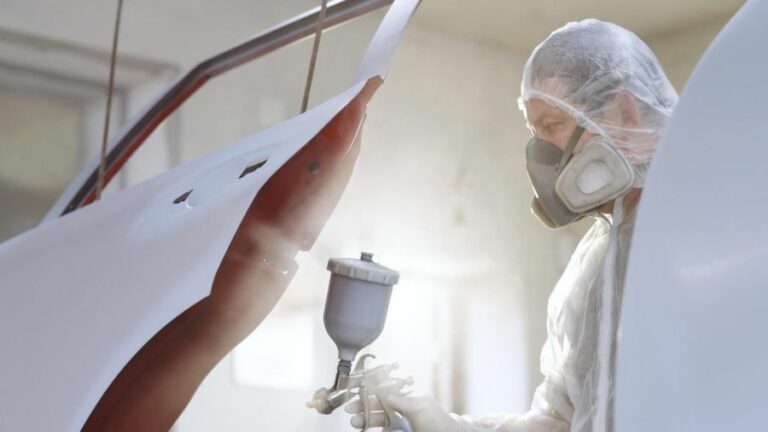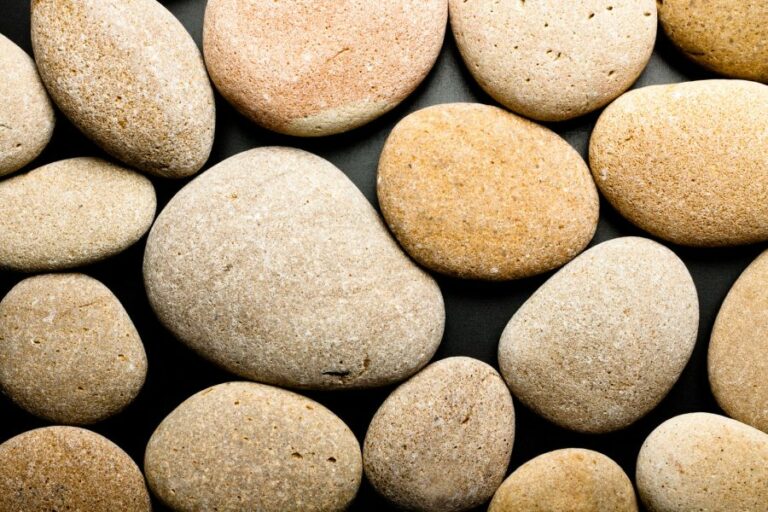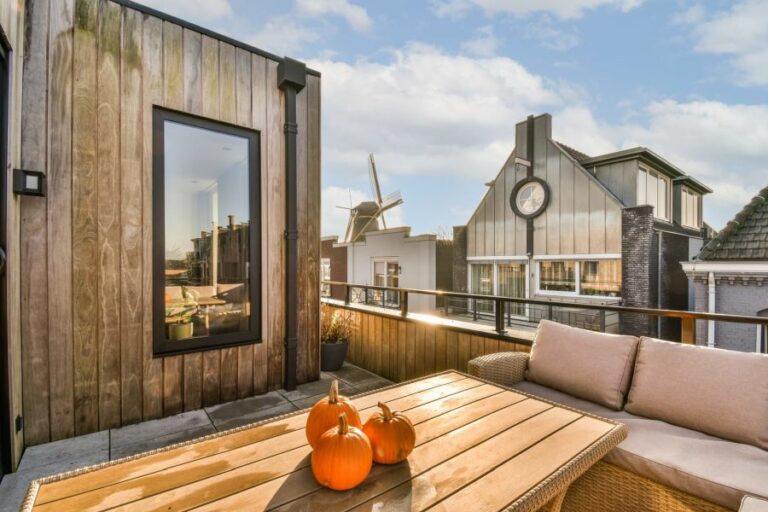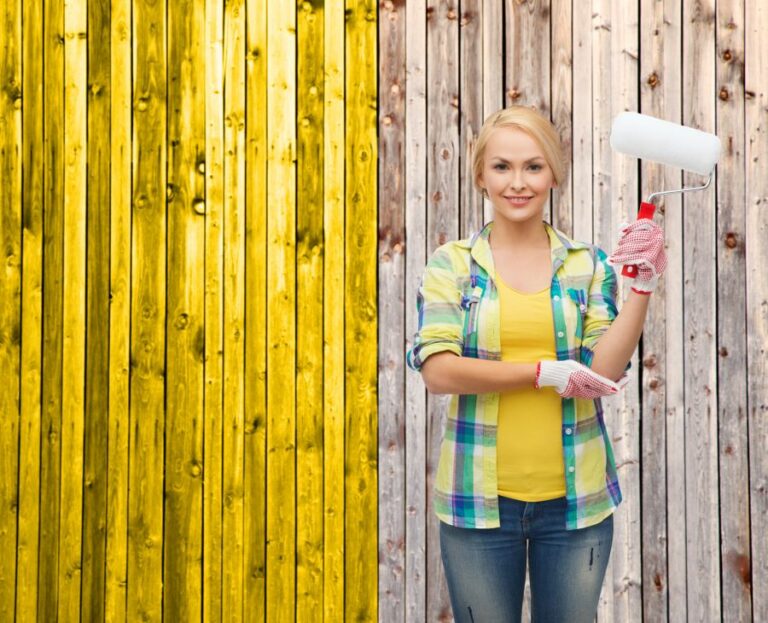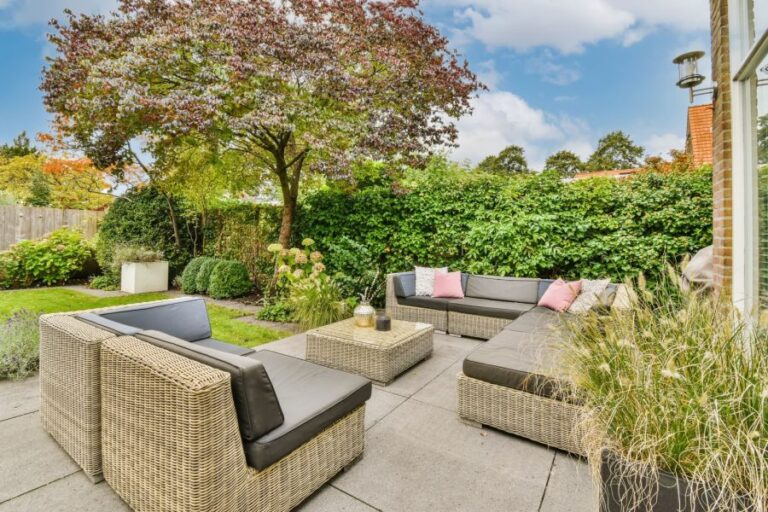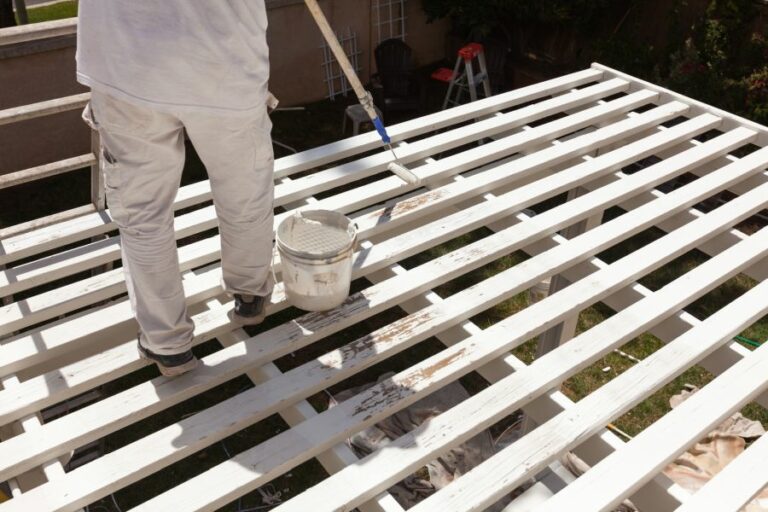Best Paint Finish For Outdoor Metal Furniture, 25 Things You Should Know
Discover the secret to revamping your outdoor oasis with my expert guide on the best paint finishes for outdoor metal furniture! Say goodbye to faded, chipped, and rusted pieces and hello to durable, eye-catching, and weather-resistant furnishings that last through sun, rain, and snow.
Best paint finish for outdoor metal furniture:
Choose the right paint finish based on your needs to achieve a durable and attractive finish on outdoor metal furniture. Options include alkyd (oil-based), acrylic (water-based), and epoxy paint finishes. Proper preparation, including cleaning and priming the surface, is crucial for the longevity of the paint. Acrylic paints offer excellent adhesion, are environmentally friendly, and are often recommended. However, epoxy paint may suit those seeking an exceptionally durable finish.

Discover the perfect paint finishes to protect and enhance your outdoor metal furniture. We’ve researched and compiled expert recommendations to ensure your pieces stay rust-free, maintain shine, and provide lasting support during year-round weather conditions. Keep reading for our top picks!
Contents
- 1 Top Paint Finishes for Exterior Metal Furniture
- 2 Which Type of Paint is Most Suitable for Outdoor Metal Furniture?
- 3 Exploring the Best Finishing Options for Outdoor Metal Furniture
- 4 What Type of Finish Paint is Suitable for Exterior Metal Surfaces?
- 5 What is the most suitable paint sheen for exterior furniture?
- 6 What is the most suitable paint sheen for exterior furniture?
Top Paint Finishes for Exterior Metal Furniture
As an expert on paint finishes, I can assure you that finding the right type of paint for your outdoor metal furniture is essential for a durable and attractive end result.
Outdoor metal furniture is constantly exposed to the elements, so you want a paint finish that can withstand varying weather conditions while maintaining its vibrant color and durability.
• Choosing the Right Type of Metal Paint Finish
There are several types of paint finishes formulated specifically for outdoor metal surfaces. These can include:
– Alkyd (Oil-Based) Paint Finishes
An alkyd or oil-based paint finish is a traditional choice for metal surfaces. These types of paint provide a glossy finish and adhere well to metal surfaces. They are known for their durability and resistance to moisture, making them a suitable choice for outdoor furniture.
However, alkyd paint finishes may take longer to dry compared to other types of finishes and may require multiple coats for proper coverage.
While they provide a long-lasting finish, alkyd paints do emit strong odors due to the volatile organic compounds (VOCs) present. Therefore, proper ventilation is crucial when working with this type of paint.
– Acrylic (Water-Based) Paint Finishes
Acrylic or water-based paint finishes are a popular choice for outdoor metal furniture as they dry quickly and have low VOC content, making them more environmentally friendly than oil-based paint finishes.
They also provide excellent adhesion to metal surfaces, including galvanized and stainless steel, and offer resistance to moisture and UV rays.
Acrylic paint finishes can come in various gloss levels, including matte, satin, semi-gloss, and gloss, providing a wide range of decorative options.
– Epoxy Paint Finishes
Epoxy paint finishes are known for their exceptional durability, making them a great option for outdoor metal furniture exposed to harsh elements.
This type of paint is made up of two components, epoxy resin, and a hardener, that must be mixed together before application. Epoxy paints can create a smooth, glossy finish that looks great and provides excellent resistance to moisture, chemicals, and UV rays.
One downside to epoxy paint finishes is that they can be challenging to work with due to their short pot life, which means that the paint must be used within a specific timeframe before it starts to harden. As a result, you must work quickly and efficiently when applying epoxy paint finishes.
• Preparation and Application Tips
– Surface Preparation
Regardless of the paint finish you choose, proper surface preparation is critical for achieving a long-lasting, attractive finish on your outdoor metal furniture.
Start by cleaning the surface thoroughly to remove any dirt, dust, or rust using a wire brush, sandpaper, or a rust remover. After cleaning, ensure the surface is dry before applying any paint.
– Priming the Surface
Applying a metal primer before painting your furniture is essential for ensuring proper adhesion and a durable finish. A metal primer can also help prevent rust formation by creating a barrier between the metal surface and the paint.
Choose a primer that is compatible with your chosen paint finish and follow the manufacturer’s instructions for application.
– Applying the Paint
Always follow the manufacturer’s instructions for the specific type of paint finish you’ve chosen. Use a suitable brush, roller, or spray applicator depending on the paint type and the size and shape of your furniture.
Apply the paint in thin, even coats, allowing each coat to dry completely before applying the next one. Typically, two to three coats of paint are recommended for adequate coverage and a long-lasting finish.
• My Recommendations
Based on my experience, I recommend using an acrylic paint finish for your outdoor metal furniture. Acrylic paint finishes provide excellent adherence and durability while being easier to work with compared to oil-based or epoxy paint finishes.
Furthermore, they have lower VOC content, making them a more environmentally friendly option.
If you’re looking for an exceptionally durable finish and don’t mind the extra effort involved in working with epoxy paint, that may also be a suitable option.
Remember that proper surface preparation, priming, and application techniques are essential to achieve a professional-looking, long-lasting finish on outdoor metal furniture.
Take the time to choose the right paint finish for your specific needs, and you’ll enjoy vibrant, durable outdoor metal furniture that can withstand the test of time and resist the elements.
Paint Finish | Description | Advantages |
|---|---|---|
Powder coating | A dry powder applied electrostatically and cured under heat | Durable, long-lasting, resistant to UV rays, corrosion, and weather conditions |
Enamel paint | Oil-based paint with a glossy finish | Durable, provides a strong and smooth finish, long-lasting, and resistant to scratches |
Acrylic latex paint | Water-based paint with a smooth and flexible finish | Weather-resistant, easy to clean, quick-drying, and low odor |
Alkyd paint | Oil-based paint with a smooth finish and good leveling properties | Long-lasting, resists fading, and adheres well to metal |
Epoxy paint | Two-component paint that forms a tough, protective coating | Highly durable, resistant to weather and chemicals, and provides excellent adhesion to metal |
Aerosol spray paint | Paint contained in a pressurized can and applied through a nozzle | Easy application, dries quickly, provides a smooth and even finish |
Which Type of Paint is Most Suitable for Outdoor Metal Furniture?
Are you planning to give a fresh new look to your outdoor metal furniture? Choosing the right type of paint is essential for ensuring durability and longevity.
• Types of Paint for Outdoor Metal Furniture
When it comes to painting outdoor metal furniture, there are various paint types to choose from. Here are the top three most recommended paint types for this purpose:
– Acrylic Latex Paint
Acrylic latex paint is a popular choice for outdoor metal furniture because of its high resistance to weather conditions, durability, and ease of application. This water-based paint dries quickly and provides excellent protection against rust and corrosion.
Advantages:
- High resistance to weather conditions
- Excellent adhesion to metal surfaces
- Easy to clean up with soap and water
- Quick drying time
Disadvantages:
- Some acrylic latex paints may require priming before application
- Limited color options compared to oil-based paints
– Oil-Based Paint
Oil-based paint is another suitable option for outdoor metal furniture. It offers stronger adhesion than latex paint and provides a smooth, glossy finish that can last for several years. However, it takes longer to dry and may require more skill to apply.
Advantages:
- Long-lasting, glossy finish
- Strong adhesion to metal surfaces
- More color options than water-based paints
Disadvantages:
- Longer drying time
- Requires mineral spirits for thinning and clean-up
- Can be more challenging to apply
– Direct-to-Metal (DTM) Paint
Direct-to-metal (DTM) paint is specifically formulated for use on metal surfaces. It is a combined primer and paint, making it a convenient option for painting outdoor metal furniture. This type of paint offers excellent adhesion, durability, and corrosion resistance.
Advantages:
- All-in-one primer and paint
- Superior adhesion and corrosion resistance
- Suitable for various metal surfaces
Disadvantages:
- Can be more expensive than other paint types
- Limited availability in local hardware stores
• Preparing Your Outdoor Metal Furniture for Painting
Before applying paint to your outdoor metal furniture, properly preparing the surface is crucial. This ensures better paint adhesion and a smoother finish. Here are some steps to follow:
– Step 1: Cleaning the Furniture
Thoroughly clean the metal furniture with mild detergent and water to remove dirt, grease, and grime. Use a stiff brush or sponge to scrub the surface effectively. Rinse the furniture with clean water and let it dry completely.
– Step 2: Removing Rust and Loose Paint
Check the furniture for signs of rust or loose paint. To remove these areas, use a wire brush, sandpaper, or a paint scraper. Sand the entire surface lightly to ensure proper paint adhesion.
– Step 3: Applying Primer
Depending on the type of paint you have chosen, you may need to apply a primer designed for metal surfaces. Priming helps improve paint adhesion and provides additional protection against rust and corrosion. Follow the manufacturer’s instructions for proper application and drying time.
• Painting Techniques for Outdoor Metal Furniture
To achieve a professional finish, consider these painting techniques:
– Spray Painting
Spray paint offers a quick and easy way to apply an even coat on outdoor metal furniture. Look for a paint specifically designed for metal surfaces and follow the manufacturer’s instructions for use. Apply several thin coats, allowing each coat to dry as recommended.
Pro Tip: Always practice spray painting on a scrap piece of material first to ensure proper technique and avoid uneven or patchy coverage.
– Brush Painting
Brush painting is another method to paint outdoor metal furniture, especially for intricate designs or when spray painting is not an option. Use a high-quality paintbrush designed for the type of paint you have chosen. Apply the paint in thin, even coats, being careful to avoid visible brush strokes.
• Final Thoughts and Recommendations
In conclusion, when selecting the best paint for outdoor metal furniture, consider factors such as durability, weather resistance, and ease of application. Acrylic latex paint, oil-based paint, and direct-to-metal (DTM) paint are all excellent options for giving your furniture a fresh, long-lasting look.
Remember to properly prepare the surface before painting, including cleaning, removing rust and loose paint, and applying primer if necessary. Choose the right painting technique for your project, and enjoy your beautifully updated outdoor metal furniture.
Paint Type | Advantages | Disadvantages |
|---|---|---|
Acrylic Latex Paint | Durable, easy to clean, fast-drying, rust-resistant | May require multiple coats for full coverage |
Oil-Based Paint | Excellent adhesion, provides a smooth finish, rust-resistant | Slow drying time, fumes, difficult to clean up |
Spray Paint | Easy application, provides an even coat, quick drying time | May require multiple coats, possible overspray |
Direct-to-Metal (DTM) Paint | Specifically designed for metal surfaces, excellent adhesion, rust-resistant | May require a primer, can be more expensive |
Exploring the Best Finishing Options for Outdoor Metal Furniture
Outdoor metal furniture is popular for many homeowners due to its durability, timeless style, and low maintenance requirements.
However, one critical aspect to consider when purchasing or maintaining outdoor metal furniture is the type of finish that will provide the best protection from environmental elements such as rain, sunlight, and temperature fluctuations.
• Powder Coating: A Strong and Durable Option
Powder coating is a finishing process that utilizes a dry, free-flowing powder that is applied electrostatically and then cured under heat to form a hard, long-lasting finish. This finish is highly resistant to cracking, peeling, and fading, making it an excellent option for outdoor metal furniture.
– Advantages of Powder Coating
- Durability: Powder coating creates a thick layer that protects the metal from scratches, abrasion, and corrosion. This makes it a top choice for outdoor furniture that may be exposed to harsh weather conditions.
- Long-lasting color: The powder used in this process contains pigments, which provide a vibrancy that lasts for years without fading or losing its sheen.
- Environmentally friendly: Powder coating does not use solvents, which means it is a more environmentally friendly option when compared to traditional liquid-based paints.
- Ease of maintenance: Powder-coated furniture requires minimal maintenance and is easy to clean, making it a popular choice for busy households.
– Disadvantages of Powder Coating
- Difficulty in repairing: It can be challenging to repair if the powder coating becomes damaged. The entire piece may need to be stripped and recoated, which can be time-consuming and costly.
- Limited color options: While many color options are available, there may be fewer choices than with other finishing methods.
From personal experience, I recommend powder coating for outdoor metal furniture, as it provides a robust and durable finish that requires minimal maintenance. This finish will last for many years, making it worth the investment.
• Paint: A Versatile and Accessible Choice
Painting is another popular option when selecting a finish for outdoor metal furniture. Several types of paint are available, each with its benefits and drawbacks.
– Acrylic Latex Paint
Acrylic latex paint is water-based and provides excellent durability, adhesion, and flexibility. This type of paint is ideal for metal furniture that will be exposed to fluctuating temperatures and moisture levels.
– Oil-Based Paint
Oil-based paint offers excellent adhesion and durability, ideal for metal surfaces. This type of paint is resistant to moisture, making it suitable for outdoor furniture. However, it can take longer to dry, and the fumes can be toxic, so proper ventilation is necessary when working with oil-based paints.
– Advantages of Painting
- Color variety: Paint offers nearly limitless color options, allowing you to customize your outdoor furniture according to your preferences.
- Accessibility: Paint is readily available at many retail locations and is generally more affordable than other finishing options, such as powder coating.
– Disadvantages of Painting
- Reduced durability: Paint may not be as durable as powder coating and may require more frequent maintenance and touch-ups.
- Longer drying time: Depending on the type of paint used, drying times can vary, and proper ventilation is required during application.
If you prefer a wider variety of color options and accessibility, I recommend using paint for your outdoor metal furniture finish. While it may not be as durable as powder coating, regular maintenance can extend its lifespan.
• Clear Coats: An Extra Layer of Protection
Clear coats are transparent finishes that can be applied over paint or bare metal, providing additional protection from environmental elements.
– Types of Clear Coats
- Urethane Clear Coat: Urethane clear coats are highly resistant to UV rays, chemicals, and abrasion, making them an excellent choice for outdoor metal furniture.
- Acrylic Clear Coat: Acrylic clear coats are easy to apply and offer good UV resistance but may not provide the same level of durability as urethane clear coats.
Applying a clear coat over a painted finish can enhance the furniture’s longevity, providing an extra layer of protection against the elements. I recommend using a urethane clear coat for maximum durability.
• In Conclusion
Selecting the best finish for your outdoor metal furniture depends largely on personal preferences and priorities. If durability and low maintenance are your primary concerns, powder coating is an excellent choice.
Painting may be the most suitable option for those who prefer a wider range of color options at a lower cost. Applying a clear coat over the surface can provide additional protection and longevity, regardless of the initial finish type.
Regardless of the finish you choose, proper care and maintenance will extend the lifespan of your outdoor metal furniture and keep it looking like new for years to come.
Finish Type | Pros | Cons |
|---|---|---|
Powder coating | Durable, wide range of colors, resists chipping and scratching | Can be expensive, requires professional application |
Paint | Easily accessible, easy to apply, inexpensive, wide range of colors | May require frequent touch-ups, can chip and peel over time |
Galvanized finish | Long-lasting, corrosion-resistant, low-maintenance | Not suitable for all types of metal, limited aesthetic choices |
Stainless steel | Corrosion-resistant, durable, low-maintenance | Can be expensive, limited aesthetic choices |
Clear coat | Can preserve the natural look of metal, provides a layer of protection | May require frequent reapplication, may not be suitable for all types of metal |
What Type of Finish Paint is Suitable for Exterior Metal Surfaces?
• Understanding the Importance of Exterior Metal Paint
Exterior metal surfaces such as gates, railings, and window frames require special care and protection against weathering and corrosion. The right finish paint not only helps in preserving the aesthetics of these surfaces but also ensures their longevity and durability.
• Types of Finish Paints for Exterior Metals
1. Alkyd Paints
Alkyd paints, also known as oil-based or solvent-based paints, are among the most commonly used finish paints for exterior metals. They are made of synthetic resins and provide excellent adhesion to surfaces.
Key Features:
- Excellent chemical and abrasion resistance
- High corrosion resistance
- Durable and long-lasting finish
Strong adhesion to the surface
Keep in mind that epoxy paints can be difficult to apply and require accurate mixing of the epoxy resin and hardener components. Also, they may degrade over time under direct sunlight, resulting in chalking or color fading.
4. Polyurethane Paints
Polyurethane paints are high-performance finish paints that provide excellent protection against weathering, corrosion, and UV light. They can be either solvent-based (also known as aliphatic polyurethane) or water-based (also known as acrylic polyurethane).
Key Features:
- High resistance to weathering and UV light
- Exceptional gloss and color retention
- Excellent abrasion resistance
- Good surface flexibility
• Factors to Consider for Choosing the Right Finish Paint for Exterior Metals
1. Surface Preparation and Priming
Before applying a finish paint, it is crucial to clean and prepare the metal surface properly. For metals prone to rusting, such as iron and steel, it is essential to remove all traces of rust and apply a rust-inhibitive primer.
Zinc-rich primers or epoxy primers can provide excellent protection against corrosion. For non-ferrous metals like aluminum or galvanized steel, etching primers can be used to ensure proper adhesion of the paint.
2. Durability and Performance
The choice of finish paint should be based on the desired level of durability and performance. For instance, epoxy and polyurethane paints offer superior performance but may come at a higher cost.
On the other hand, alkyd and acrylic paints can provide a more economical option but may compromise the longevity and quality of the finish.
3. Environmental Factors
Suppose you live in a region with harsh environmental conditions or coastal areas with high exposure to saltwater. In that case, it is crucial to choose a finish paint that can withstand these factors without losing its protective properties.
Epoxy and polyurethane paints are more suitable for such conditions due to their high resistance to weathering, moisture, and corrosion.
4. Aesthetics and Gloss Retention
The finish paint should be able to maintain its appearance and gloss over time. Polyurethane paints have excellent gloss and color retention properties, while acrylics balance performance and aesthetics well.
5. Budget Constraints
While high-performance finish paints offer excellent durability and protection, they can be more expensive than their conventional counterparts.
It is essential to weigh the benefits of the paint against your budget and opt for a product that meets both your performance expectations and financial constraints.
• Final Thoughts
In conclusion, the ideal finish paint for exterior metal surfaces depends on various factors such as the type of metal, desired durability and performance, environmental conditions, and budget constraints.
By understanding the key features of different finish paints and considering the factors mentioned above, you can make an informed decision and choose the best paint for your exterior metal surface.
What is the most suitable paint sheen for exterior furniture?
Outdoor furniture can make any outdoor space more inviting, comfortable, and functional. However, choosing the right paint for your outdoor furniture is crucial in order to protect your investment and ensure long-term durability. One of the essential factors to consider when selecting paint is its sheen or finish.
• Understanding Different Sheens of Paint
Before diving into the main topic, it is essential to understand the different sheens of paint available in the market. In general, there are four primary paint sheen categories:
- Flat or Matte finish
- Satin finish
- Semi-Gloss finish
- Gloss finish
Each category offers a particular level of reflectivity, resistance to dirt and moisture, and overall appearance. Let’s take a closer look at each sheen type.
– Flat or Matte Finish
As the name implies, flat or matte paint has almost no sheen, providing a smooth, non-reflective surface. Matte paint is an excellent choice for hiding surface imperfections on furniture, as it absorbs light rather than reflecting it.
However, matte finishes can be prone to stains and dirt accumulation, making them less suitable for outdoor furniture.
– Satin Finish
Satin finish paint is slightly more reflective than matte paint, offering a subtle sheen that gives a soft, elegant appearance. In addition to being more visually appealing, satin paint provides better moisture and dirt resistance than flat finishes.
Thus, satin finishes are often used for outdoor furniture pieces exposed to variable weather conditions.
– Semi-Gloss Finish
Semi-gloss paint offers a higher level of sheen and reflectivity, resulting in a more polished and clean-looking finish. Semi-gloss paint is known for its durability, resistance to stains and dirt, and relatively easy maintenance.
This sheen is suitable for outdoor furniture, as it can withstand regular wear and tear and offers excellent protection against moisture and damage.
– Gloss Finish
A gloss finish offers the highest level of sheen and reflectivity among paint types, giving a sleek, glass-like appearance. Gloss paints are highly durable, moisture-resistant, and easy to clean, making them ideal for areas exposed to heavy use or the elements.
However, glossy surfaces can also highlight imperfections in your furniture and may become slippery, especially when wet.
• Best Sheen for Your Outdoor Furniture
Now that we have a grasp of the different sheen types, let’s determine the best paint sheen for your outdoor furniture.
– Consider the Material
The best paint sheen for your outdoor furniture largely depends on the material it is made of. I recommend using a satin or semi-gloss finish for wooden furniture to balance durability and aesthetics while avoiding making the surface too slippery.
For metal furniture, a gloss finish is generally preferred due to its enhanced durability and moisture, rust, and corrosion resistance.
– Think About Maintenance
Choosing a paint sheen with easy maintenance in mind is crucial for outdoor furniture, as they are often exposed to the elements and can accumulate dirt and grime over time.
Semi-gloss and gloss finishes are easier to clean and maintain than flat or matte finishes, providing better protection against dirt, moisture, and damage.
– Aesthetics Matter
Another factor to consider is the desired appearance of your outdoor furniture. A satin finish may be the best choice if you prefer a subtle, elegant look.
On the other hand, if you want your furniture to have a polished, sleek appearance with a higher level of reflectivity, a semi-gloss or gloss finish may be more suitable.
• Final Thoughts
In conclusion, the best sheen of paint for outdoor furniture largely depends on its material, the desired appearance, and your maintenance preferences.
I generally recommend using a satin or semi-gloss finish for wooden outdoor furniture, as these finishes provide a good balance of durability, aesthetics, and low maintenance. A gloss finish is often the best choice for metal furniture due to its enhanced protection against rust, corrosion, and moisture.
Ultimately, the decision will depend on your specific needs and preferences, but considering these factors will help you select the best paint sheen for your outdoor furniture.
Sheen | Benefits | Drawbacks |
|---|---|---|
Flat/Matte Finish | Hides surface imperfections, good for rough or textured surfaces | Not as durable, difficult to clean |
Satin Finish | Medium sheen, more durable than flat, easier to clean | Will show surface imperfections, not ideal for textured surfaces |
Gloss Finish | Very durable, easy to clean, provides elegant shine | Shows surface imperfections, may require multiple coats |
Semi-Gloss Finish | More durable than satin, easy to clean, slight shine | Can show surface imperfections, not ideal for textured surfaces |
High-Gloss Finish | Most durable, highly reflective, easy to clean | Shows surface imperfections, requires proper surface preparation |
- High durability
- Good adhesion to metal surfaces
- Ease of application
Dries into a hard and glossy finish
However, alkyd paints may take a longer time to dry and can emit a strong odor due to volatile organic compounds (VOCs), which can be harmful to the environment and cause health concerns.
2. Acrylic Paints
Acrylic paints are water-based paints that deliver quick-drying properties and a durable finish. These paints are gaining popularity among homeowners due to their low VOC content and environmental friendliness.
Key Features:
- Water-based and eco-friendly
- Low VOC content
- Fast drying time
- Resistant to UV rays, moisture, and mildew
Acrylic paints require proper surface preparation and priming, especially for metal surfaces, to ensure good adhesion and lasting results.
3. Epoxy Paints
Epoxy paints are two-component paint systems that exhibit superior durability and resistance to chemicals, abrasions, and corrosion. They are widely used for industrial and marine applications on exterior metal surfaces.
Key Features:
- Excellent chemical and abrasion resistance
- High corrosion resistance
- Durable and long-lasting finish
Strong adhesion to the surface
Keep in mind that epoxy paints can be difficult to apply and require accurate mixing of the epoxy resin and hardener components. Also, they may degrade over time under direct sunlight, resulting in chalking or color fading.
4. Polyurethane Paints
Polyurethane paints are high-performance finish paints that provide excellent protection against weathering, corrosion, and UV light. They can be either solvent-based (also known as aliphatic polyurethane) or water-based (also known as acrylic polyurethane).
Key Features:
- High resistance to weathering and UV light
- Exceptional gloss and color retention
- Excellent abrasion resistance
- Good surface flexibility
• Factors to Consider for Choosing the Right Finish Paint for Exterior Metals
1. Surface Preparation and Priming
Before applying a finish paint, it is crucial to clean and prepare the metal surface properly. For metals prone to rusting, such as iron and steel, it is essential to remove all traces of rust and apply a rust-inhibitive primer.
Zinc-rich primers or epoxy primers can provide excellent protection against corrosion. For non-ferrous metals like aluminum or galvanized steel, etching primers can be used to ensure proper adhesion of the paint.
2. Durability and Performance
The choice of finish paint should be based on the desired level of durability and performance. For instance, epoxy and polyurethane paints offer superior performance but may come at a higher cost.
On the other hand, alkyd and acrylic paints can provide a more economical option but may compromise the longevity and quality of the finish.
3. Environmental Factors
Suppose you live in a region with harsh environmental conditions or coastal areas with high exposure to saltwater. In that case, it is crucial to choose a finish paint that can withstand these factors without losing its protective properties.
Epoxy and polyurethane paints are more suitable for such conditions due to their high resistance to weathering, moisture, and corrosion.
4. Aesthetics and Gloss Retention
The finish paint should be able to maintain its appearance and gloss over time. Polyurethane paints have excellent gloss and color retention properties, while acrylics balance performance and aesthetics well.
5. Budget Constraints
While high-performance finish paints offer excellent durability and protection, they can be more expensive than their conventional counterparts.
It is essential to weigh the benefits of the paint against your budget and opt for a product that meets both your performance expectations and financial constraints.
• Final Thoughts
In conclusion, the ideal finish paint for exterior metal surfaces depends on various factors such as the type of metal, desired durability and performance, environmental conditions, and budget constraints.
By understanding the key features of different finish paints and considering the factors mentioned above, you can make an informed decision and choose the best paint for your exterior metal surface.
What is the most suitable paint sheen for exterior furniture?
Outdoor furniture can make any outdoor space more inviting, comfortable, and functional. However, choosing the right paint for your outdoor furniture is crucial in order to protect your investment and ensure long-term durability. One of the essential factors to consider when selecting paint is its sheen or finish.
• Understanding Different Sheens of Paint
Before diving into the main topic, it is essential to understand the different sheens of paint available in the market. In general, there are four primary paint sheen categories:
- Flat or Matte finish
- Satin finish
- Semi-Gloss finish
- Gloss finish
Each category offers a particular level of reflectivity, resistance to dirt and moisture, and overall appearance. Let’s take a closer look at each sheen type.
– Flat or Matte Finish
As the name implies, flat or matte paint has almost no sheen, providing a smooth, non-reflective surface. Matte paint is an excellent choice for hiding surface imperfections on furniture, as it absorbs light rather than reflecting it.
However, matte finishes can be prone to stains and dirt accumulation, making them less suitable for outdoor furniture.
– Satin Finish
Satin finish paint is slightly more reflective than matte paint, offering a subtle sheen that gives a soft, elegant appearance. In addition to being more visually appealing, satin paint provides better moisture and dirt resistance than flat finishes.
Thus, satin finishes are often used for outdoor furniture pieces exposed to variable weather conditions.
– Semi-Gloss Finish
Semi-gloss paint offers a higher level of sheen and reflectivity, resulting in a more polished and clean-looking finish. Semi-gloss paint is known for its durability, resistance to stains and dirt, and relatively easy maintenance.
This sheen is suitable for outdoor furniture, as it can withstand regular wear and tear and offers excellent protection against moisture and damage.
– Gloss Finish
A gloss finish offers the highest level of sheen and reflectivity among paint types, giving a sleek, glass-like appearance. Gloss paints are highly durable, moisture-resistant, and easy to clean, making them ideal for areas exposed to heavy use or the elements.
However, glossy surfaces can also highlight imperfections in your furniture and may become slippery, especially when wet.
• Best Sheen for Your Outdoor Furniture
Now that we have a grasp of the different sheen types, let’s determine the best paint sheen for your outdoor furniture.
– Consider the Material
The best paint sheen for your outdoor furniture largely depends on the material it is made of. I recommend using a satin or semi-gloss finish for wooden furniture to balance durability and aesthetics while avoiding making the surface too slippery.
For metal furniture, a gloss finish is generally preferred due to its enhanced durability and moisture, rust, and corrosion resistance.
– Think About Maintenance
Choosing a paint sheen with easy maintenance in mind is crucial for outdoor furniture, as they are often exposed to the elements and can accumulate dirt and grime over time.
Semi-gloss and gloss finishes are easier to clean and maintain than flat or matte finishes, providing better protection against dirt, moisture, and damage.
– Aesthetics Matter
Another factor to consider is the desired appearance of your outdoor furniture. A satin finish may be the best choice if you prefer a subtle, elegant look.
On the other hand, if you want your furniture to have a polished, sleek appearance with a higher level of reflectivity, a semi-gloss or gloss finish may be more suitable.
• Final Thoughts
In conclusion, the best sheen of paint for outdoor furniture largely depends on its material, the desired appearance, and your maintenance preferences.
I generally recommend using a satin or semi-gloss finish for wooden outdoor furniture, as these finishes provide a good balance of durability, aesthetics, and low maintenance. A gloss finish is often the best choice for metal furniture due to its enhanced protection against rust, corrosion, and moisture.
Ultimately, the decision will depend on your specific needs and preferences, but considering these factors will help you select the best paint sheen for your outdoor furniture.
Sheen | Benefits | Drawbacks |
|---|---|---|
Flat/Matte Finish | Hides surface imperfections, good for rough or textured surfaces | Not as durable, difficult to clean |
Satin Finish | Medium sheen, more durable than flat, easier to clean | Will show surface imperfections, not ideal for textured surfaces |
Gloss Finish | Very durable, easy to clean, provides elegant shine | Shows surface imperfections, may require multiple coats |
Semi-Gloss Finish | More durable than satin, easy to clean, slight shine | Can show surface imperfections, not ideal for textured surfaces |
High-Gloss Finish | Most durable, highly reflective, easy to clean | Shows surface imperfections, requires proper surface preparation |

